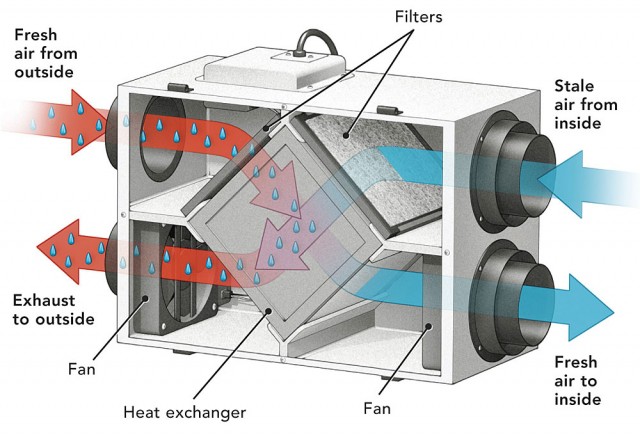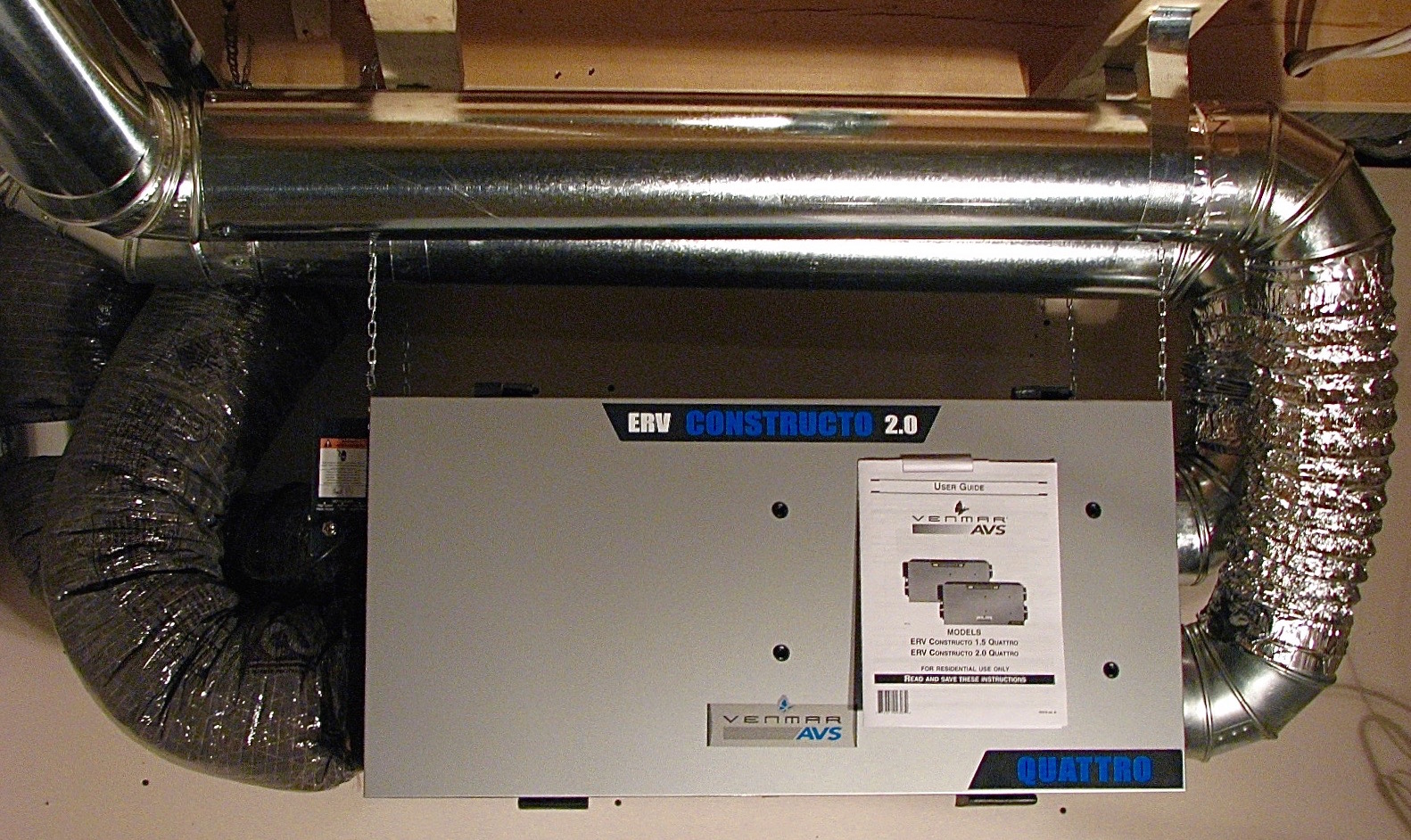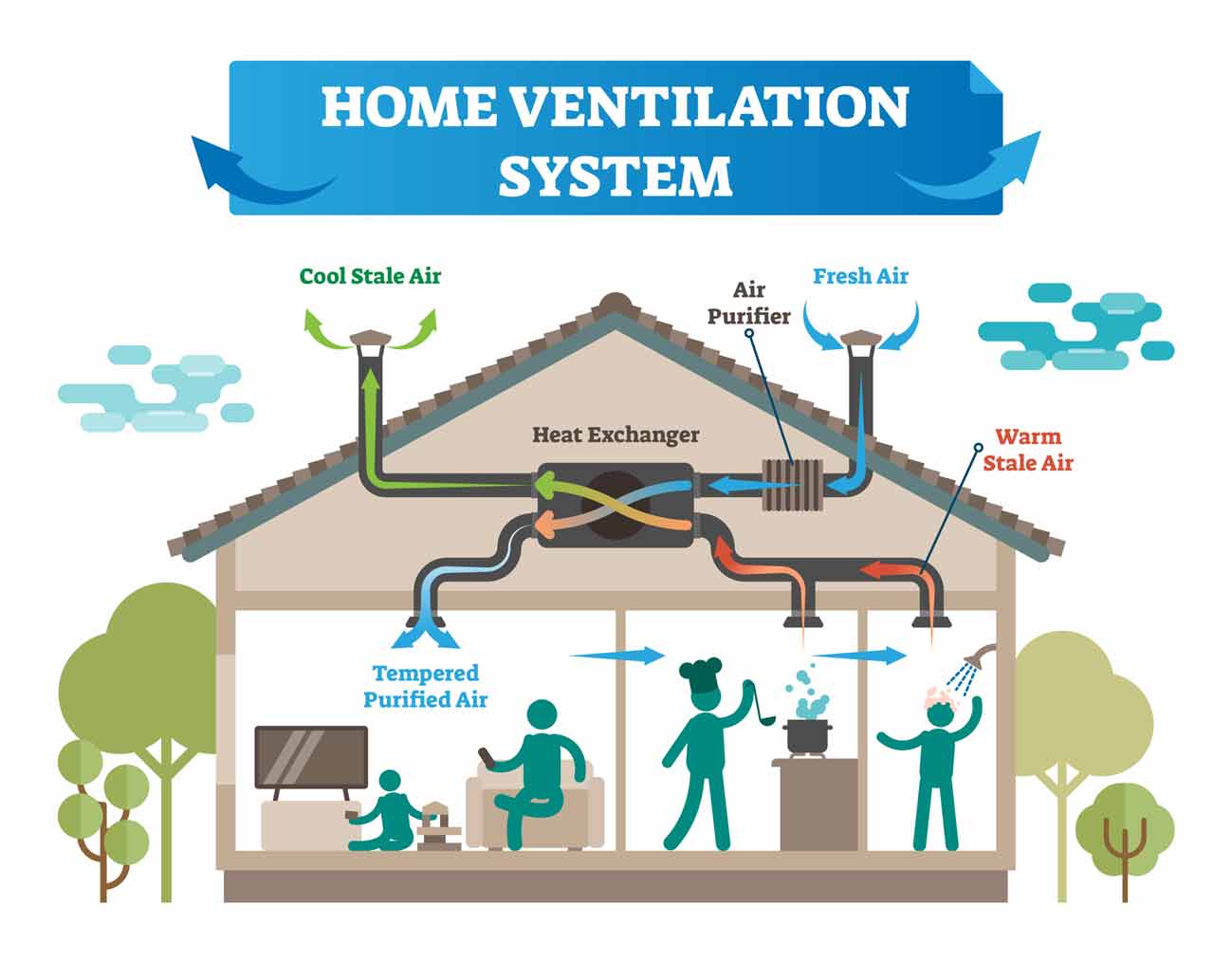How Long Does HRV Last? Understanding System Lifespan
Wiki Article
The All-Inclusive Overview to the Uses of Heat Recovery Ventilation in Modern Buildings
Heat Recovery Ventilation (HRV) systems represent a substantial improvement in constructing modern technology (HRV Heat Recovery Ventilation). They give a technique for trading stagnant interior air with fresh outdoor air while minimizing energy loss. This method not only boosts indoor air quality however likewise adds to energy performance in both household and business buildings. Recognizing the various applications and advantages of HRV can reveal its critical function in modern style and sustainability initiatives. The implications of this modern technology are worth exploring additionallyRecognizing Heat Recovery Ventilation Systems

Although several contemporary structures focus on energy effectiveness, recognizing heat healing air flow (HRV) systems is crucial for optimizing indoor air top quality and reducing energy intake. HRV systems function by moving heat from stale indoor air to inbound fresh air, efficiently keeping comfy interior temperature levels while decreasing power loss. These systems include a warm exchanger, fans, and ductwork that assist in the circulation of air. During winter months, HRV systems capture and reuse warm from the outbound air, while in summer season, they can assist cool down inbound air. By constantly trading air, HRV systems likewise minimize humidity and the focus of interior toxins. Proper setup and maintenance of HRV systems are necessary for their performance and efficiency in boosting total structure efficiency and comfort.
Benefits of Heat Recovery Ventilation
Heat recovery ventilation systems provide many benefits that enhance both power performance and interior air top quality in modern-day buildings. By capturing and reusing energy from exhaust air, these systems significantly minimize cooling and heating prices, leading to lower energy usage. They keep a steady circulation of fresh outside air, lessening the threat of interior air pollutants and irritants. This continuous exchange aids manage humidity degrees, protecting against mold and mildew growth and ensuring a much healthier living atmosphere. Furthermore, HRV systems add to sustainability goals by lowering overall carbon impacts. Their capacity to enhance air flow without giving up thermal convenience makes them a useful enhancement to contemporary structure layout, advertising both financial and ecological advantages.Applications of HRV in Residential Structures
As house owners progressively focus on power efficiency and indoor air top quality, the applications of heat healing air flow (HRV) systems in domestic buildings have come to be more common. HRV systems are specifically advantageous in firmly secured homes, where keeping fresh air circulation is crucial for protecting against Bonuses dampness accumulation and interior pollutants. They effectively move heat from outgoing stale air to inbound fresh air, decreasing power expenses linked with heating and cooling. Additionally, HRVs can improve comfort degrees by controling moisture and temperature level. They are likewise adaptable for different household designs, consisting of single-family homes and multi-unit structures. In general, integrating HRV systems sustains sustainable living methods while making sure a much healthier indoor atmosphere for occupants.HRV in Industrial and Industrial Settings
In industrial and industrial settings, the application of warm healing air flow (HRV) systems has ended up being increasingly crucial for enhancing energy performance and maintaining air redirected here high quality. These systems efficiently move warm from exhaust air to incoming fresh air, decreasing the requirement for added home heating or cooling. This not only reduces energy expenses however likewise adds to sustainability initiatives. Industries such as manufacturing, warehousing, and office buildings benefit considerably from HRV systems, as they aid control temperature and humidity degrees, making certain a comfortable and efficient atmosphere. Additionally, HRV systems aid in getting rid of contaminants and excess wetness, improving interior air high quality. As guidelines around air quality come to be more stringent, the fostering of HRV technology is likely to expand, making it a critical component of modern-day business and commercial facilities.Future Trends in Heat Recovery Ventilation Modern Technology

Frequently Asked Inquiries
How Does Heat Recovery Ventilation Effect Indoor Air Quality?
Heat recovery ventilation substantially enhances indoor air high quality by continuously exchanging stale interior air with fresh outside air while recouping energy. This procedure decreases toxins, preserves optimal moisture levels, and ensures a healthier setting for residents.Can HRV Solutions Be Installed in Existing Buildings?
HRV systems can without a doubt be installed in existing buildings. Retrofitting may call for adjustments to ductwork and ventilation designs, however it significantly improves energy performance and indoor air high quality, making it a feasible choice for older frameworks.What Upkeep Is Needed for HRV Systems?

Are There Certain Climates Where HRV Is Much More Effective?
Heat recovery ventilation systems are specifically efficient in climates with substantial temperature level distinctions between seasons. These systems enhance power performance by recouping heat from exhaust air, making them optimal for both cool and moderately cozy environments.Exactly How Do HRV Solutions Affect Energy Expenses?

Report this wiki page